Armored Catfish
Callichthys callichthys, the cascarudo, armored catfish, bubblenest catfish, hassar, or mailed catfish, is a subtropical freshwater fish belonging to the subfamily Callichthyinae of the family Callichthyidae.
The fish will grow in length up to eight inches (20 centimeters). The females are larger and more robust, and are a dull olive-green, while the males are brighter in color, exhibiting a delicate blue or violet sheen laterally, with a more developed and longer pectoral fin spine that is reddish-brown and edged with orange or reddish-orange.
It lives in a variety of water types, from anoxic conditions (slack water zones surrounded by dense vegetation) to slightly turbid, but free-flowing, streams. It can be found in waters with pH range of 5.8 to 8.3, a water hardness of 0–30dGH, and a temperature range of 64–83 °F (18–28 °C). When its biotype becomes dry, it can move out of the water, due to its ability to swallow air and use its intestines to absorb oxygen from the atmosphere, to find more water.
It feeds at night on fish, insects, and plant matter. Juveniles feed on rotifers, in addition to the microcrustaceans and aquatic insect larvae they find when digging into the substrate.
During reproduction, the male's belly turns orange and its pectoral spines become longer and thicker. The male builds a bubble nest with some floating plants, fiercely guarding it after the female lays down her eggs.
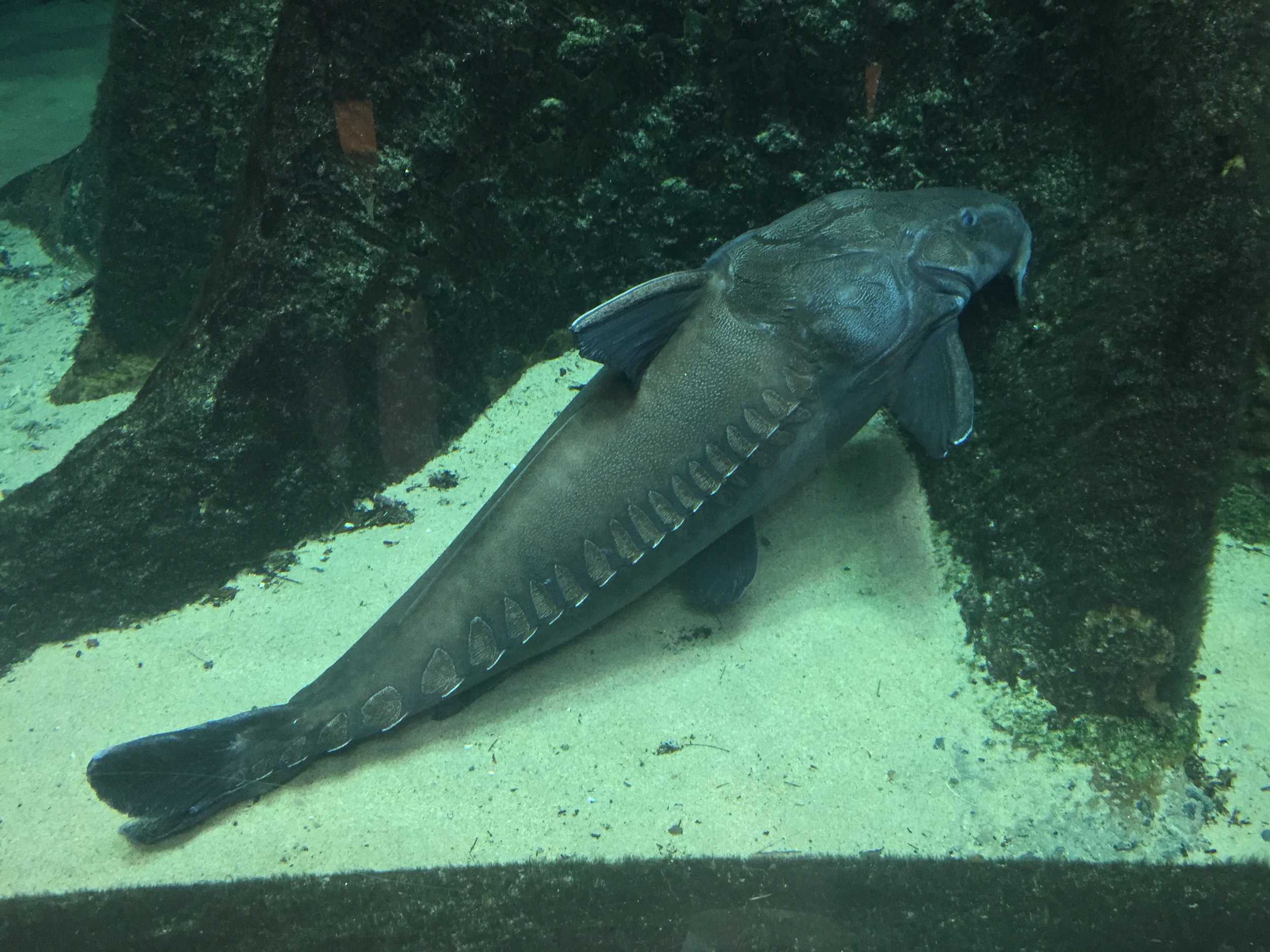
By albedo20. CC BY-NC-ND 2.0, via Flickr
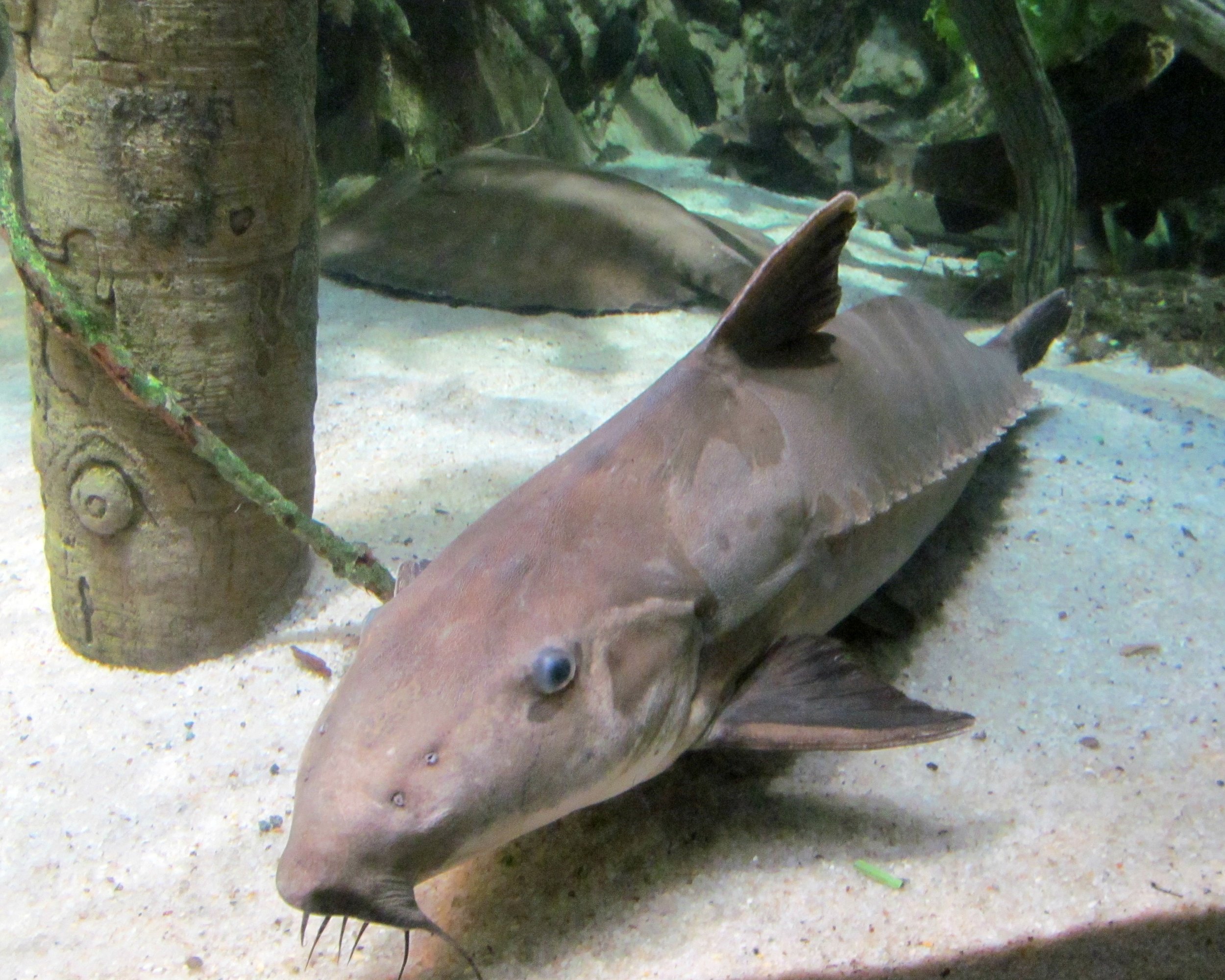
By Eden, Janine and Jim. CC BY 2.0, via Flickr
Black Bass
Micropterus is a genus of freshwater fish in the sunfish family (family Centrarchidae) of order Perciformes. The species of this genus are known as the black bass.
The black bass are sometimes erroneously called black trout, but the name trout more correctly refers to certain members of the salmon family.
The black bass are distributed throughout a large area east of the Rocky Mountains in North America, from the Hudson Bay basin in Canada to northeastern Mexico. Several species, notably the Largemouth and Smallmouth basses, have been very widely introduced throughout the world, and are now considered cosmopolitan. Black bass of all species are highly sought-after game fish, and bass fishing is an extremely popular sport throughout the bass's native range. These fish are well known as strong fighters, and their meat is eaten, being quite edible and firm.
All Micropterus species have a dull-green base coloring with dark patterns on the sides. Most reach a maximum overall length of 16–24", but some strains of the largemouth bass have been reported to grow to almost a full three feet in length.
The male builds a "bed" (nest) in which a female is induced to deposit her eggs and then fertilizes them. The male continues to guard the eggs and fry until they disperse from the nest.
Various species have been introduced into freshwater bodies in Japan, where they have been declared nuisance fish, and subjected to numerous attempts at eradicating them from local ecosystems.
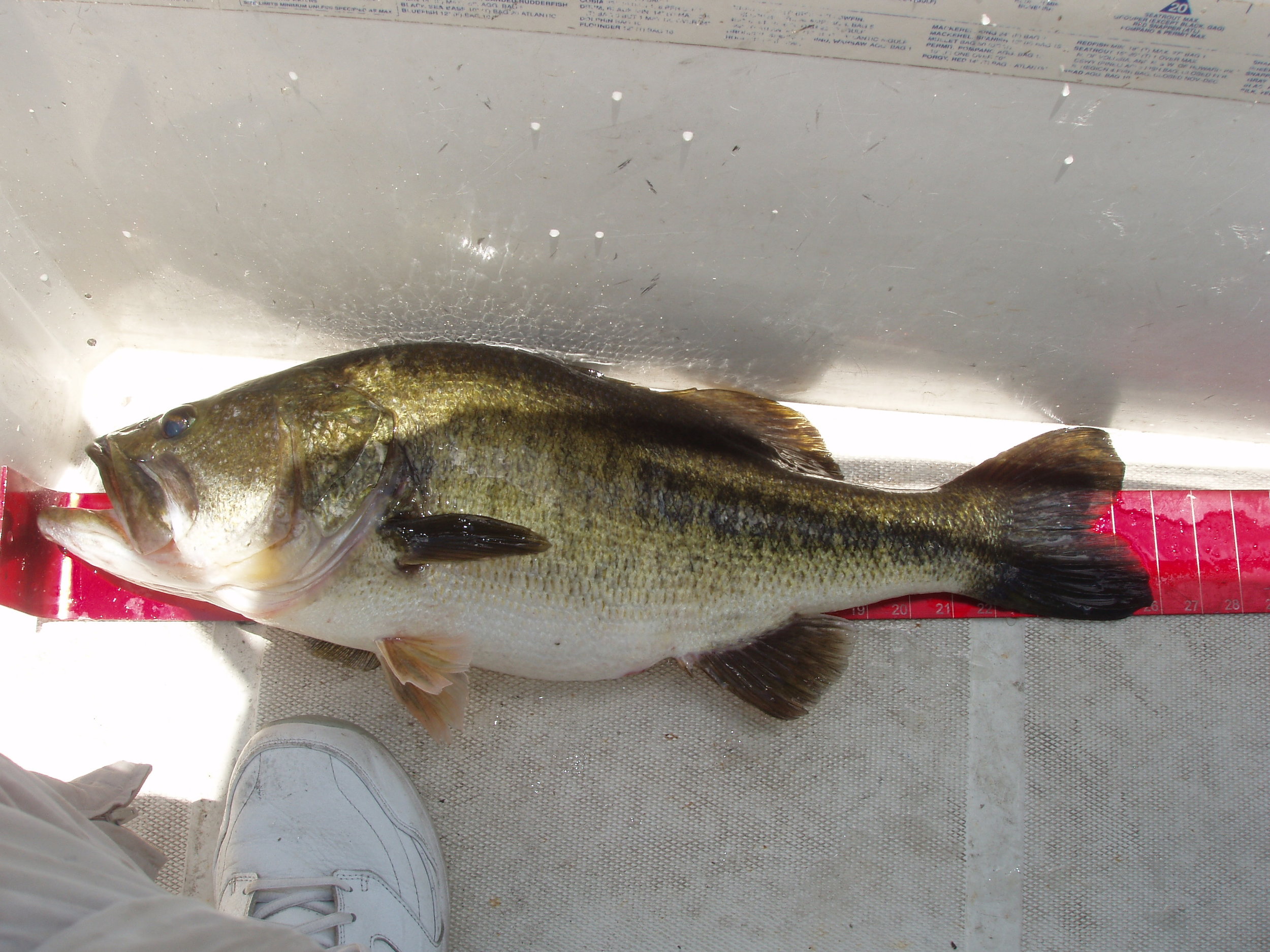
By Florida Fish and Wildlife. CC BY-ND 2.0, via Flickr
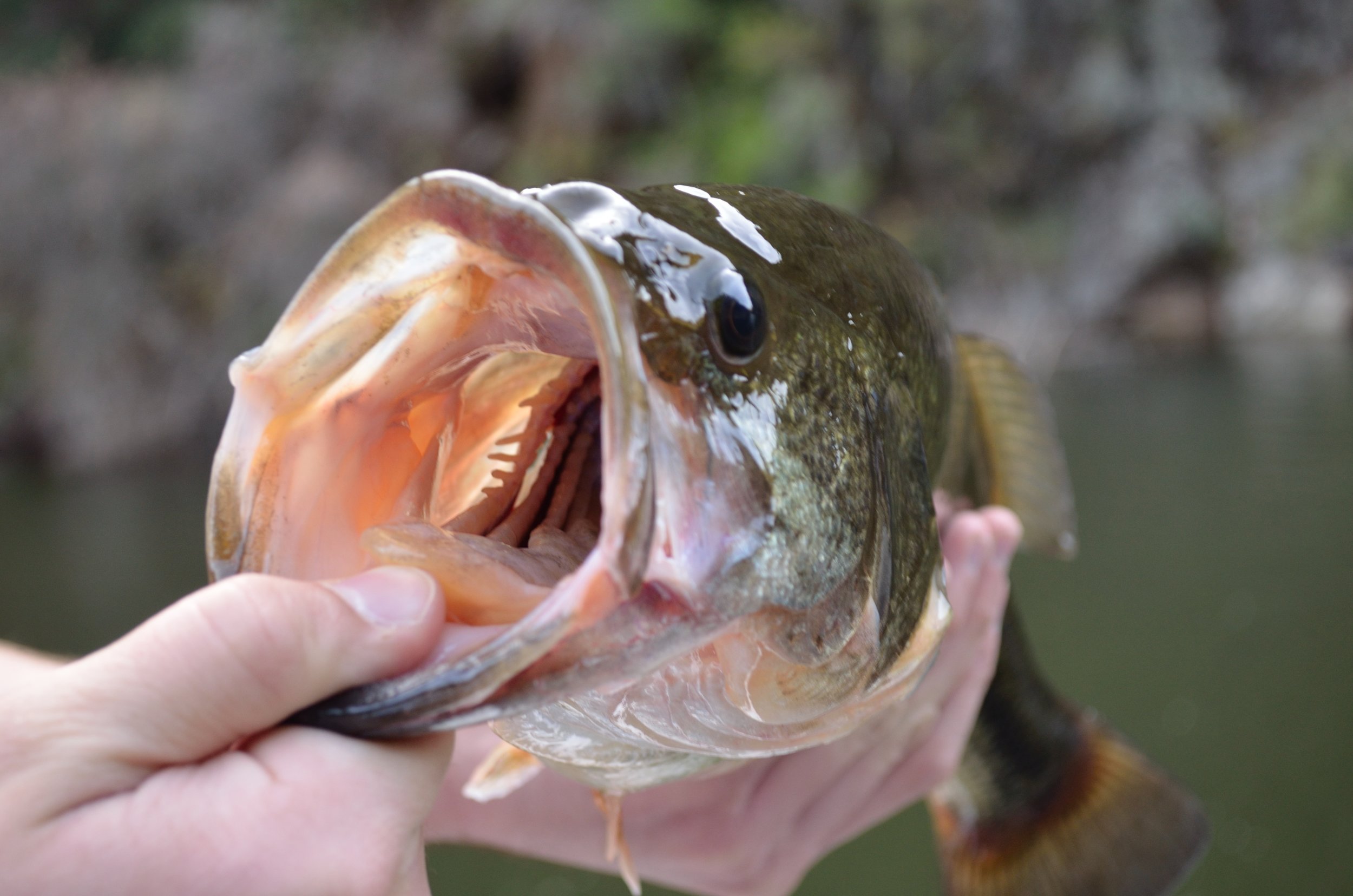
By Javier Orti. CC BY-ND 2.0, via Flickr
Bluegill Perch
The bluegill (Lepomis macrochirus) is a species of freshwater fish sometimes referred to as bream, brim, or copper nose. It is a member of the sunfish family Centrarchidae of the order Perciformes. It is native to North America and lives in streams, rivers, lakes, and ponds. It is commonly found east of the Rockies. It usually hides around, and inside, old tree stumps and other underwater structures. It can live in either deep or very shallow water, and will often move back and forth, depending on the time of day or season. Bluegills also like to find shelter among water plants and in the shade of trees along banks.
Bluegills can grow up to 12 inches long and about 4 1⁄2 pounds. They have very distinctive coloring, with deep blue and purple on the face and gill cover, dark olive-colored bands down the side, and a fiery orange to yellow belly. The fish are omnivores and will eat anything they can fit in their mouth. They mostly feed on small aquatic insects and fish. The fish play a key role in the food chain, and are prey for muskies, walleye, trout, bass, herons, kingfishers, snapping turtles, and otters.
The bluegill is noted for the black spot that it has on the posterior edge of the gills and base of the dorsal fin. The sides of its head and chin are a dark shade of blue. It usually contains 5–9 vertical bars on the sides of its body, but these stripes are not always distinct. It has a yellowish breast and abdomen, with the breast of the breeding male being a bright orange. The bluegill has three anal spines, ten to 12 anal fin rays, six to 13 dorsal fin spines, 11 to 12 dorsal rays, and 12 to 13 pectoral rays. They are characterized by their deep, flattened bodies. They have a terminal mouth, ctenoid scales, and a lateral line that is arched upward anteriorly. The bluegill typically ranges in size from about four to 12 inches, and reaches a maximum size just over 16 inches. The largest bluegill ever caught was four pounds, 12 ounces in 1950.
The bluegill is most closely related to the orangespotted sunfish and the redear sunfish, but different in a distinct spot at or near the base of the soft dorsal fin.
The bluegill occurs naturally in the United States east of the Rocky Mountains from coastal Virginia to Florida, west to Texas and northern Mexico, and north to western Minnesota and western New York. Today they have been introduced to almost everywhere else in North America, and have also been introduced into Europe, South Africa, Zimbabwe, Asia, South America, and Oceania. Bluegills have also been found in the Chesapeake Bay, indicating they can tolerate up to 1.8% salinity.
Bluegill live in the shallow waters of many lakes and ponds, along with slow-moving areas of streams and small rivers. They prefer water with many aquatic plants, and hide within fallen logs or water weeds. They can often be found around weed beds, where they search for food or spawn. In the summer, adults move to deep, open water where they suspend just below the surface and feed on plankton and other aquatic creatures. Bluegill try to spend most of their time in water from 60 to 80 °F (16 to 27 °C), and tend to have a home range of about 320 square feet (30 m2) during non-reproductive months. They enjoy heat, but do not like direct sunlight - they typically live in deeper water, but will linger near the water surface in the morning to stay warm. Bluegill are usually found in schools of 10 to 20 fish, and these schools will often include other panfish, such as crappie, pumpkinseeds, and smallmouth bass.
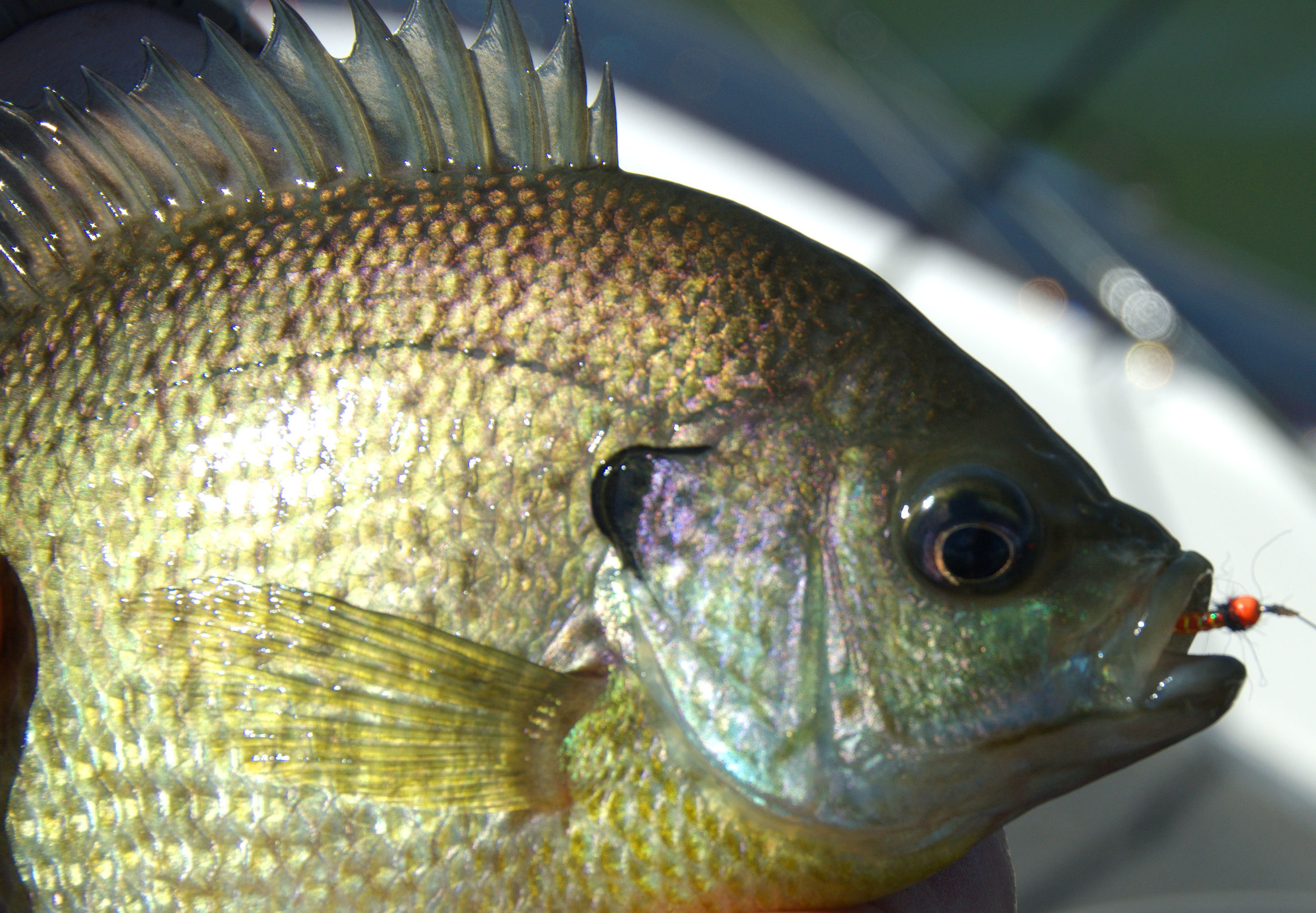
By Curtis Fry. CC BY-NC 2.0, via Flickr
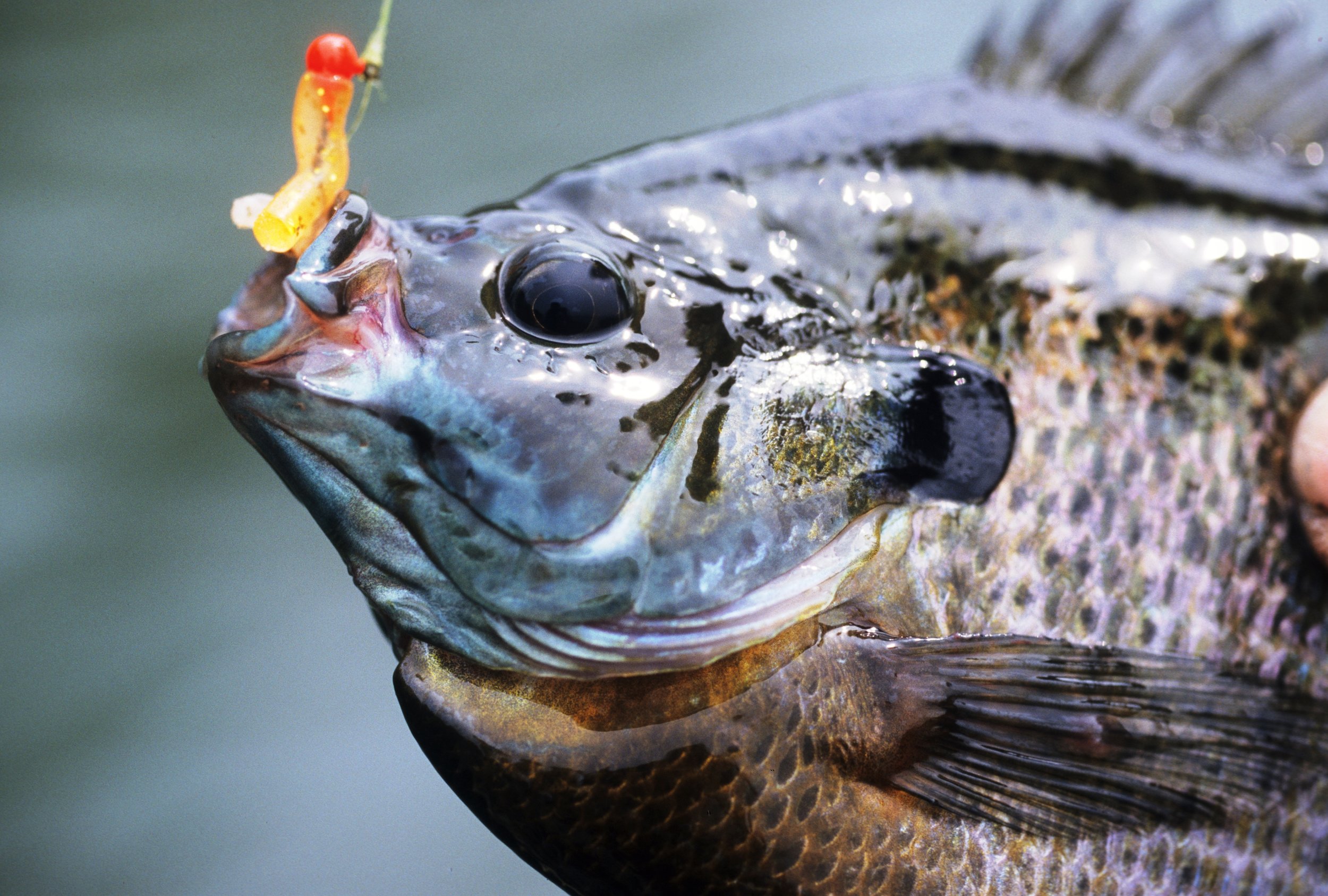
By Wisconsin Department of Natural Resources. CC BY-ND 2.0, via Flickr
Catfish
Catfish (or catfishes; order Siluriformes or Nematognathi) are a diverse group of ray-finned fish. Named for their prominent barbels, which resemble a cat's whiskers, catfish range in size and behavior from the three largest species, the Mekong giant catfish from Southeast Asia, the wels catfish of Eurasia and the piraíba of South America, to detritivores (species that eat dead material on the bottom), and even to a tiny parasitic species commonly called the candiru, Vandellia cirrhosa. There are armour-plated types and there are also naked types, neither having scales. Despite their name, not all catfish have prominent barbel. Members of the Siluriformesorder are defined by features of the skull and swimbladder. Catfish are of considerable commercial importance; many of the larger species are farmed or fished for food. Many of the smaller species, particularly the genus Corydoras, are important in the aquarium hobby. Many catfish are nocturnal, but others (many Auchenipteridae) are crepuscular or diurnal (most Loricariidae or Callichthyidae for example).
Extant catfish species live inland or in coastal waters of every continent except Antarctica. Catfish have inhabited all continents at one time or another. Catfish are most diverse in tropical South America, Asia and Africa with one family native to North America and one family in Europe. More than half of all catfish species live in the Americas. They are the only ostariophysans that have entered freshwater habitats in Madagascar, Australia, and New Guinea.
They are found in freshwater environments, though most inhabit shallow, running water. Representatives of at least eight families are hypogean (live underground) with three families that are also troglobitic (inhabiting caves). One such species is Phreatobius cisternarum, known to live underground in phreatic habitats. Numerous species from the families Ariidae and Plotosidae, and a few species from among the Aspredinidae and Bagridae, are found in salt water.
In the United States, catfish species may be known by a variety of slang names, such as "mud cat", "polliwogs", or "chuckleheads". These nicknames are not standardized, so one area may call a bullhead catfish by the nickname "chucklehead", while in another state or region, that nickname refers to the blue catfish.
Most catfish are bottom feeders. In general, they are negatively buoyant, which means that they will usually sink rather than float due to a reduced gas bladder and a heavy, bony head. Catfish have a variety of body shapes, though most have a cylindrical body with a flattened ventrum to allow for benthic feeding.
A flattened head allows for digging through the substrate as well as perhaps serving as a hydrofoil. Some have a mouth that can expand to a large size and contains no incisiform teeth; catfish generally feed through suction or gulping rather than biting and cutting prey. However, some families, notably Loricariidae and Astroblepidae, have a suckermouth that allows them to fasten themselves to objects in fast-moving water. Catfish also have a maxilla reduced to a support for barbels; this means that they are unable to protrude their mouths as other fish such as carp.
Catfish may have up to four pairs of barbels: nasal, maxillary (on each side of mouth), and two pairs of chin barbels, even though pairs of barbels may be absent depending on the species. Catfish barbels always come as pairs. Many larger catfish also have chemoreceptors across their entire bodies, which means they "taste" anything they touch and "smell" any chemicals in the water. "In catfish, gustation plays a primary role in the orientation and location of food". Because their barbels and chemoreception are more important in detecting food, the eyes on catfish are generally small. Like other ostariophysans, they are characterized by the presence of a Weberian apparatus. Their well-developed Weberian apparatus and reduced gas bladder allow for improved hearing as well as sound production.
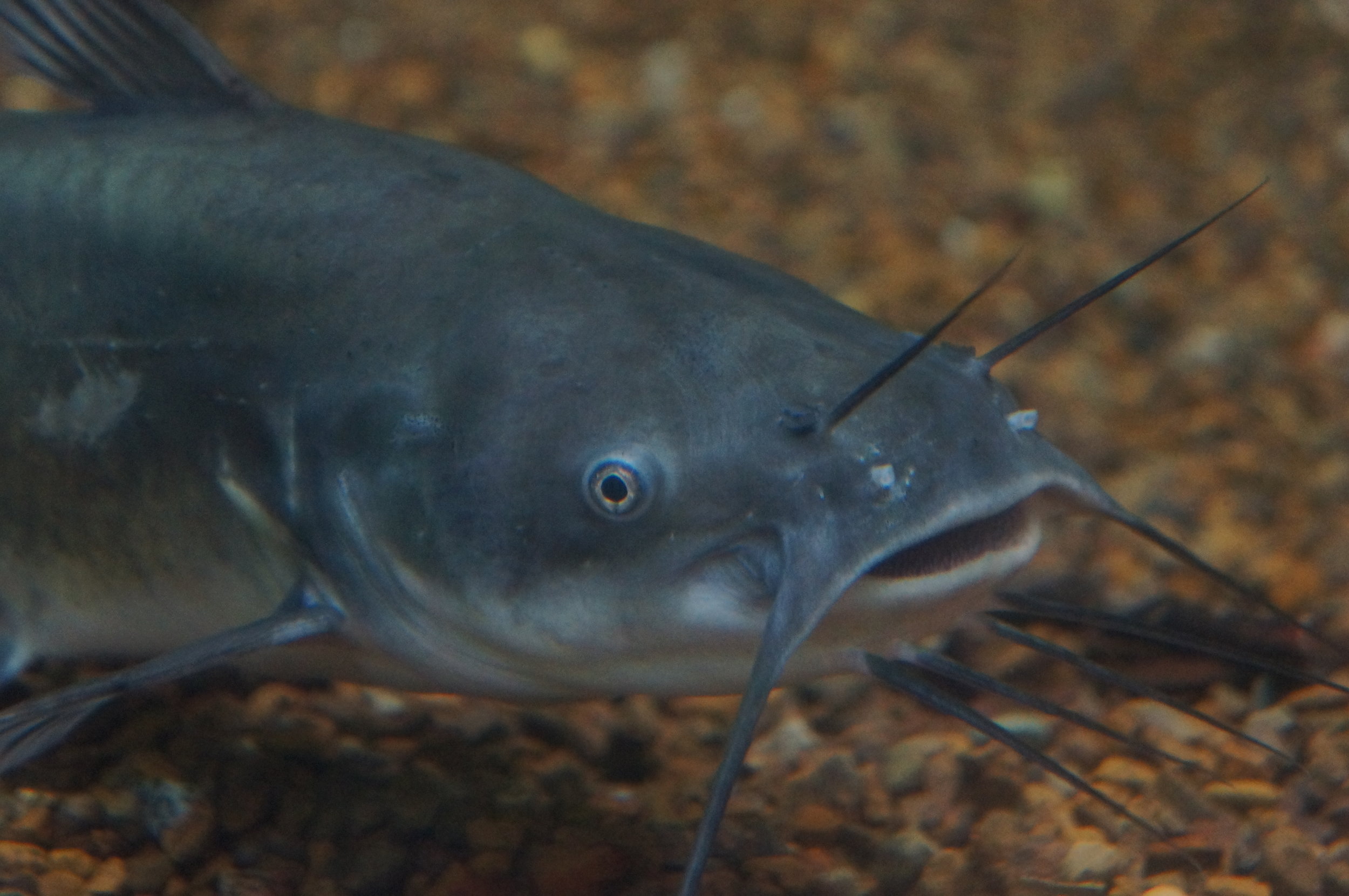
By Charlene N Simmons. CC BY-NC 2.0, via Flickr

By Harri Haataja. CC BY-SA 2.0, via Flickr
Grass Carp
The grass carp (Ctenopharyngodon idella) is the species of fish with the largest reported production in aquaculture globally, over five million tonnes per year. It is a large herbivorous freshwater fish species of the family Cyprinidae native to eastern Asia, with a native range from northern Vietnam to the Amur River on the Siberia-China border. This Asian carp is the only species of the genus Ctenopharyngodon.
It is cultivated in China for food, but was introduced in Europe and the United States for aquatic weed control. It is a fish of large, turbid rivers and associated floodplain lakes, with a wide degree of temperature tolerance. Grass carp will enter reproductive condition and spawn at temperatures of 20 to 30 °C (68 to 86 °F).
In the United States, the fish is also known as white amur, which is derived from the Amur River, where the species is probably native, but has never been abundant. This is not to be confused with the white Amur bream (Parabramis pekinensis), which is not a particularly close relative.
Grass carp have elongated, chubby, torpedo-shaped body forms. The terminal mouth is slightly oblique with non-fleshy, firm lips, and no barbels. The complete lateral line contains 40 to 42 scales. Broad, ridged, pharyngeal teeth are arranged in a 2, 4-4, 2 formula. The dorsal fin has eight to 10 soft rays, and the anal fin is set closer to the tail than most cyprinids. Body color is dark olive, shading to brownish-yellow on the sides, with a white belly and large, slightly outlined scales.
The grass carp grows very rapidly. Young fish stocked in the spring at 20 cm (7.9 in) will reach over 45 cm (18 in) by fall. The average length is about 60–100 cm (23.5–39.5 in). The maximum length is 2.0 m (6.6 ft) and they grow 100 kg (220 lb). The grass carp's maximum weight is 99 lbs. According to one study, they live an average of five to 9 years, with the oldest surviving 11 years. In Silver Lake Washington there is a thriving population of grass carp passing the 15 year mark. They eat up to three times their own body weight daily. They thrive in small lakes and backwaters that provide an abundant supply of freshwater vegetation.
This species occurs in lakes, ponds, pools, and backwaters of large rivers, preferring large, slow-flowing or standing water bodies with vegetation. In the wild, grass carp spawn in fast-moving rivers, and their eggs, which are slightly heavier than water, develop while drifting downstream, kept in suspension by turbulence. The eggs are thought to die if they sink to the bottom.
Adults of the species feed primarily on aquatic plants. They feed on higher aquatic plants and submerged terrestrial vegetation, but may also take detritus, insects, and other invertebrates.

By Chesapeake Bay Program. CC BY-NC 2.0, via Flickr
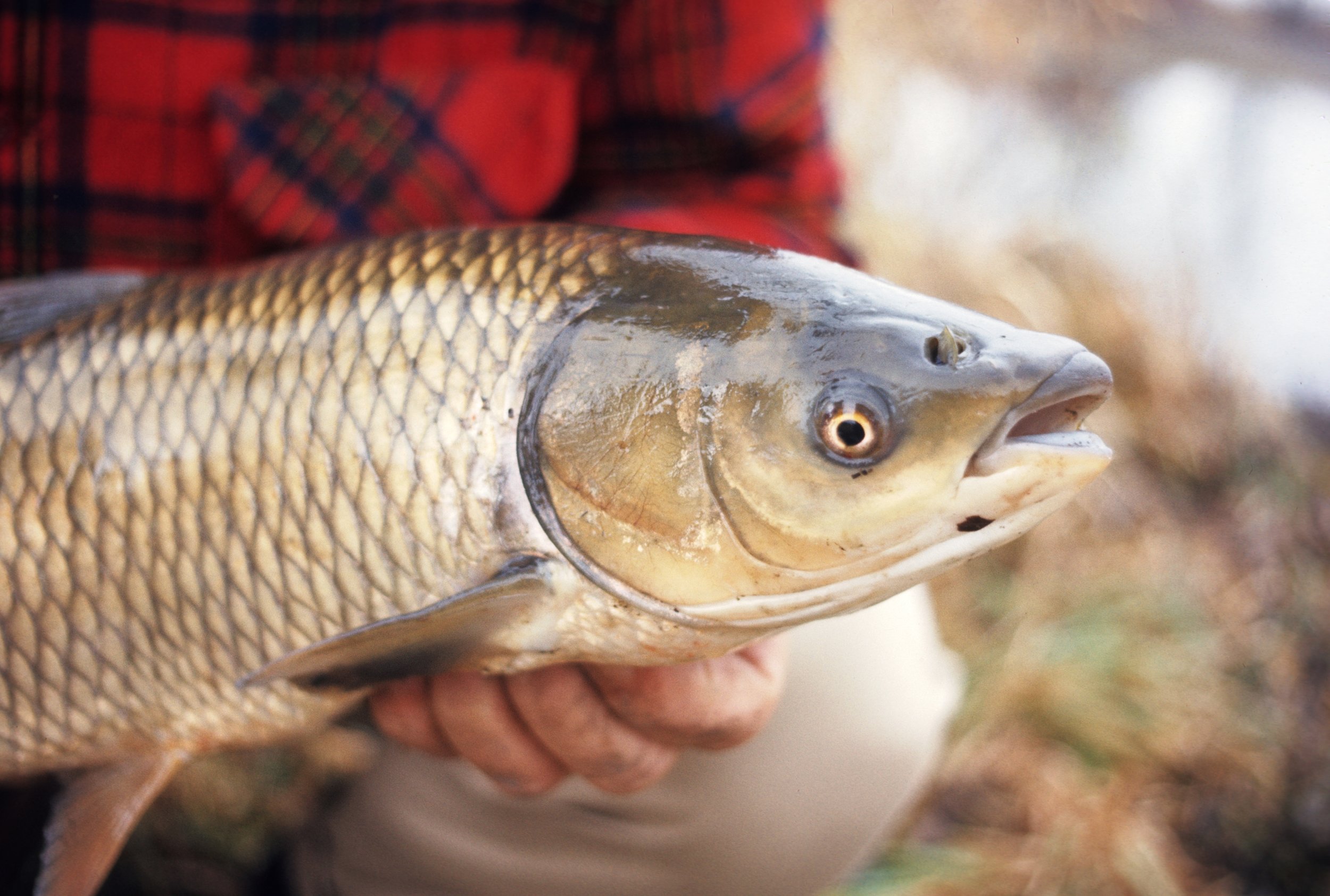
By Wisconsin Department of Natural Resources. CC BY-ND 2.0, via Flickr
Mullet
The mullets or grey mullets are a family (Mugilidae) of ray-finned fish found worldwide in coastal temperate and tropical waters, and some species in fresh water. Mullets have served as an important source of food in Mediterranean Europe since Roman times. The family includes about 78 species in 20 genera.
Mullets are distinguished by the presence of two separate dorsal fins, small triangular mouths, and the absence of a lateral line organ. They feed on detritus, and most species have unusually muscular stomachs and a complex pharynx to help in digestion. While its facade is all business, it has been known to have a party or two in the back.
A common noticeable behavior in mullet is the tendency to leap out of the water. There are two distinguishable types of leaps: a straight, clean slice out of the water to escape predators and a slower, lower jump while turning to its side that results in a larger more distinguishable splash. The reasons for this lower jump are disputed, but have been hypothesized to be in order to gain oxygen rich air for gas exchange in a small organ above the pharynx.
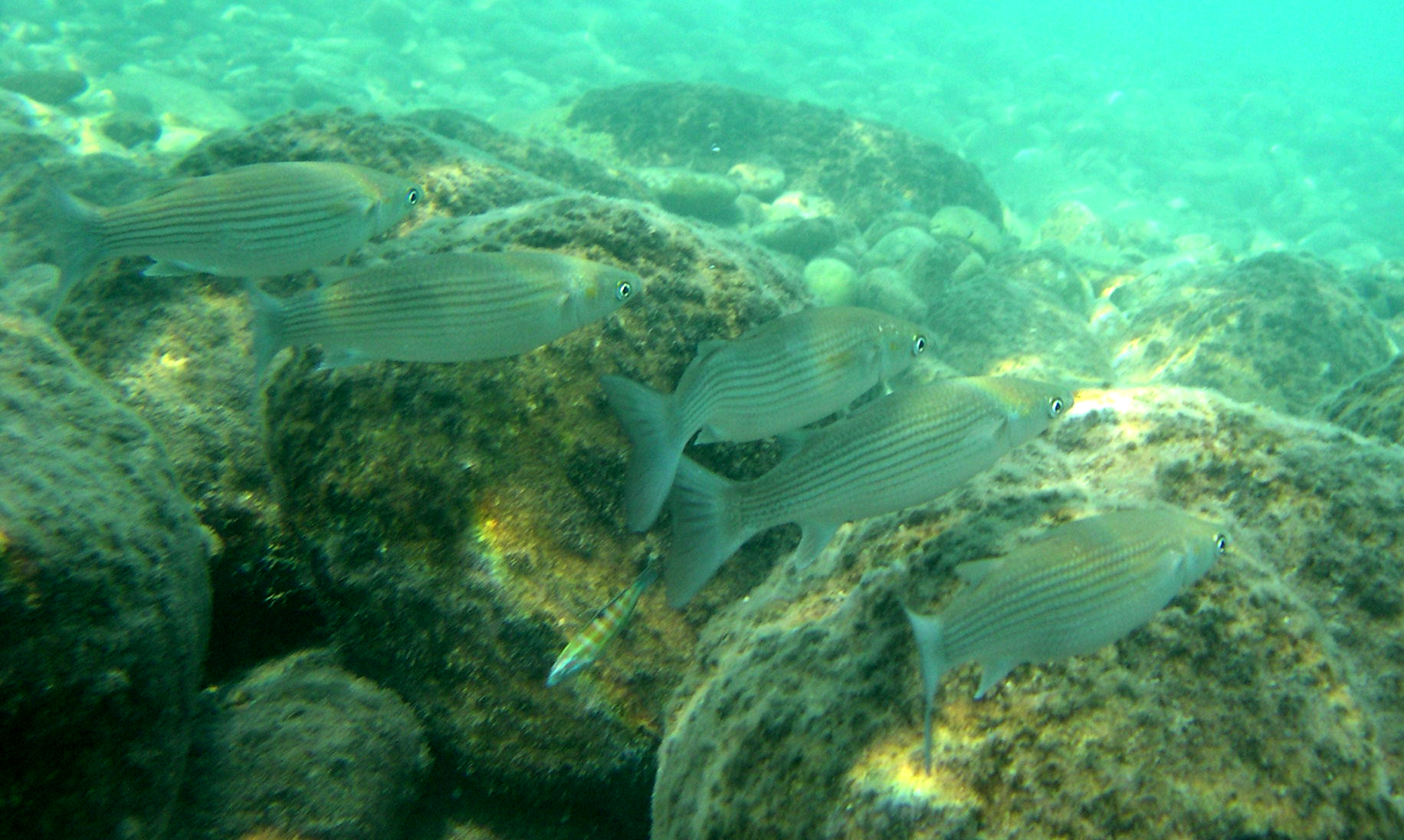
By Ray eye (selbst fotografiert von Ray eye). CC BY-SA 2.5, via Wikimedia Commons
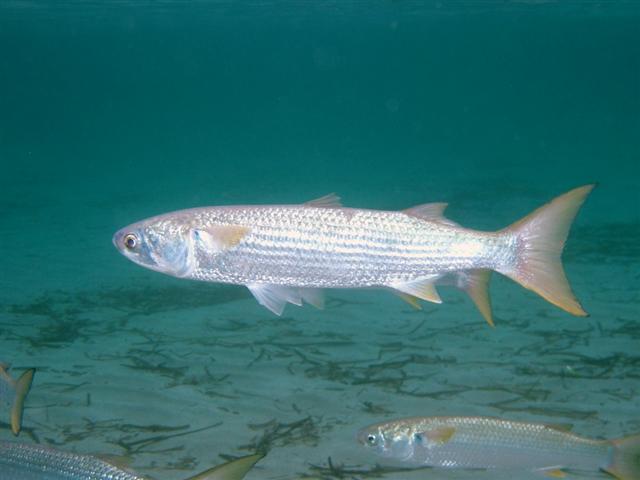
By Roberto Pillon. CC BY 3.0, via Wikimedia Commons
Spotted Gar
The spotted gar (Lepisosteus oculatus) is a primitive freshwater fish of the family Lepisosteidae, native to North America from the Lake Erie and southern Lake Michigan drainages south through the Mississippi River basin to Gulf Slope drainages, from lower Apalachicola River in Florida to Nueces River in Texas, USA. It has a profusion of dark spots on its body, head, and fins. Spotted gar are long and have an elongated mouth with many teeth used to eat other fish and crustaceans. They grow to 0.61–0.91 metres (2–3 ft) in length and weigh 1.8–2.7 kilograms (4–6 lb) on average, making it the smallest of the gars. The name Lepisosteus is Greek for "bony scale". Habitat for spotted gar is clear pools of shallow water in creeks, rivers, and lakes.
The spotted gar is a part of the gar family (Lepisosteidae). They are notable for being one of the few extant fish species with ganoid scales. They have been known to hybridize with (and look similar to) Florida gar. It occurs in quiet, clear pools and backwaters of lowland creeks, small to large rivers, oxbow lakes, swamps, and sloughs. It occasionally enters brackish waters. The fish is a voracious predator, feeding on various kinds of fishes and crustaceans. The lifespan for L. oculatus varies between males and females. The maximum lifespan for a gar is 18 years. Males mature at the age of two or three, whereas females mature at three or four years old. Females on average are known to be larger and live longer than the males. Females also have less annual mortality rates.
The spotted gar is native to North America and its current range is from southern Ontario to the west from the Nueces River in Texas east to the northern coast of the Gulf of Mexico and southeast to the lower Apalachicola River in Florida. The gar population is small in the north and is being threatened in Lake Erie by the destruction of their habitat and pollution. The gar is more common in the southern waters like the Mississippi River basin from southern Minnesota to Alabama and western Florida. Historical records indicate the spotted gar resided in the Thames and Sydenham Rivers in Ontario, Canada. Also, the fish was once common in Illinois in the Green and Illinois Rivers to the swamps in Union County; though sporadic, the population has dwindled in these water systems because of the loss of specific habitat they need to live, clear pools with aquatic vegetation.


